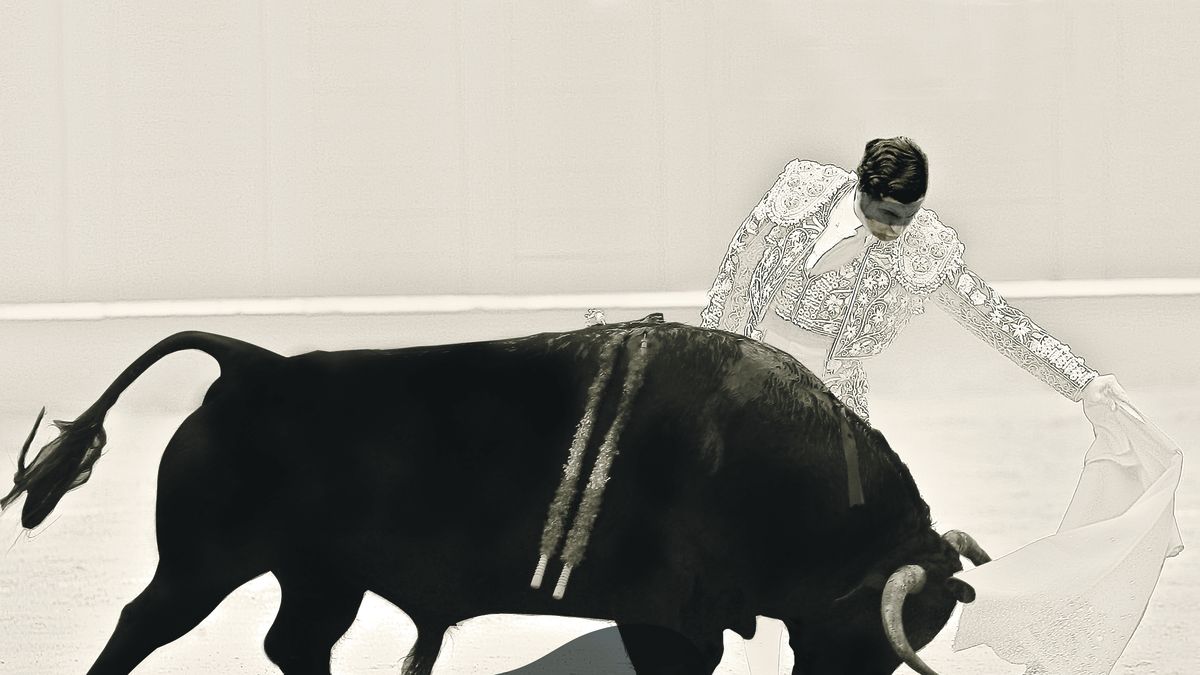Several artists make up an exhibition that revolves around death and the dramatic words of Lorca. Upon entering the room on the second floor, the music composed by Daniel Doura is heard, which is combined with images and accompanies the poems composed and recited by Luz Castillo. There is an affinity achieved, and evidently sought, between the verses and rhythm of Lorca and Castillo. Then, in the center of the room, Ariel Ballester recreates the death of the poet with a conceptual work. “88 mass graves” part of an investigation and tells the story of August 16, 1936, when the Falangists arrested García Lorca in Granada, as soon as they took the Andalusian city. Two days later, he was shot along with a teacher and two banderilleros. The location of the place is uncertain. His remains were never found and Ballester captures satellite images where mass graves from the Civil War were found. The search is represented in a collage with 88 satellite photos. To the right of this work, are the portraits of García Lorca and the three anarchists shot together with him. The executioners are featured in a group photo and one of them is holding a baby in his arms.
Zulema Maza presents a triptych with intervened photographs. “Spilled Blood” is made up of three digital collages inspired by the well-known poem “Crying for Ignacio Sánchez Mejías”, a bullfighter friend of Lorca who died in the middle of the job. In the foreground, on the right, the immense dark silhouette of the bull charging into the bullfighter’s cape stands out. The sleek Veronica is perfect. But on the sand, there is a dramatic red pool; puddle “of agony” says the verse. The flat, round forms generate a distance that coincides with historical memory and is a resource that works visually. The figure of the bullfighter is a light drawing and his presence fades. The central image concentrates the information, shows the front of the “Hotel Castelar” and on the walls, the verses of García Lorca are printed, where it reads “It was five o’clock in the afternoon”. The photo on the right, “Plaza de toros”, describes death in an almost abstract way. The curved lines define the square almost in shadow and, on the sand, an immense red stain stands out. The body of the bullfighter has disappeared from the scene.
Curated by Eduardo Medici, the show features a surreal image of Julieta Anaut and a photographic installation on “Poet in New York” by Andrés Wertheim. García Lorca had a close relationship with Salvador Dalí and according to the Critic Guillermo de Torre, “the enchantment of such poems lies, on the one hand, in their atmosphere of disjointed, voluntary, gloriously arbitrary dream; on the other, more substantially, in its pure metaphorical creation ”.
On the third floor, in a dimly lit room, you can see a selection of photos taken from the internet. García Lorca with Dalí and other characters, along with the drawings that he exhibited at the Dalmau gallery in Barcelona. Fragments of the film “Blood Wedding” (1981) by Carlos Saura with the dancer Antonio Gades, based on the work of García Lorca, are projected on a white wall. Saura had seen the tragedy of Lorca taken to the ballet and, seduced, decided to film it. That collaboration with Gades continued in a trilogy: “Carmen” (1983, on the music of Georges Bizet) and “El amor brujo” (1986, on Manuel de Falla). However, the last two choreographies were created for the screen; only that of “Blood Wedding” pre-existed its filming.
The stories suspended in the memory of the viewer emerge and enrich the journey. The exhibition is completed with the works of Belén Castillo, Cristina Fresca, Lena Szankay and Fer Zannol.
Source From: Ambito
David William is a talented author who has made a name for himself in the world of writing. He is a professional author who writes on a wide range of topics, from general interest to opinion news. David is currently working as a writer at 24 hours worlds where he brings his unique perspective and in-depth research to his articles, making them both informative and engaging.




